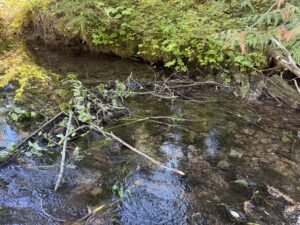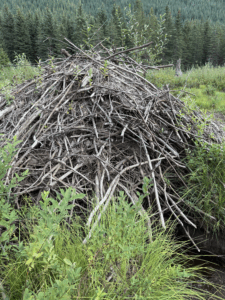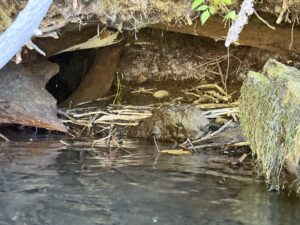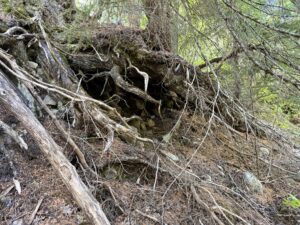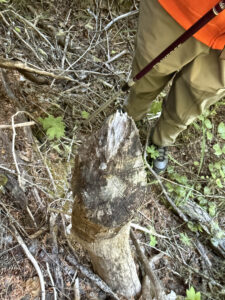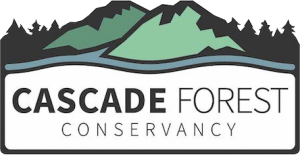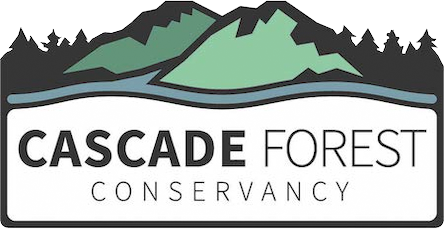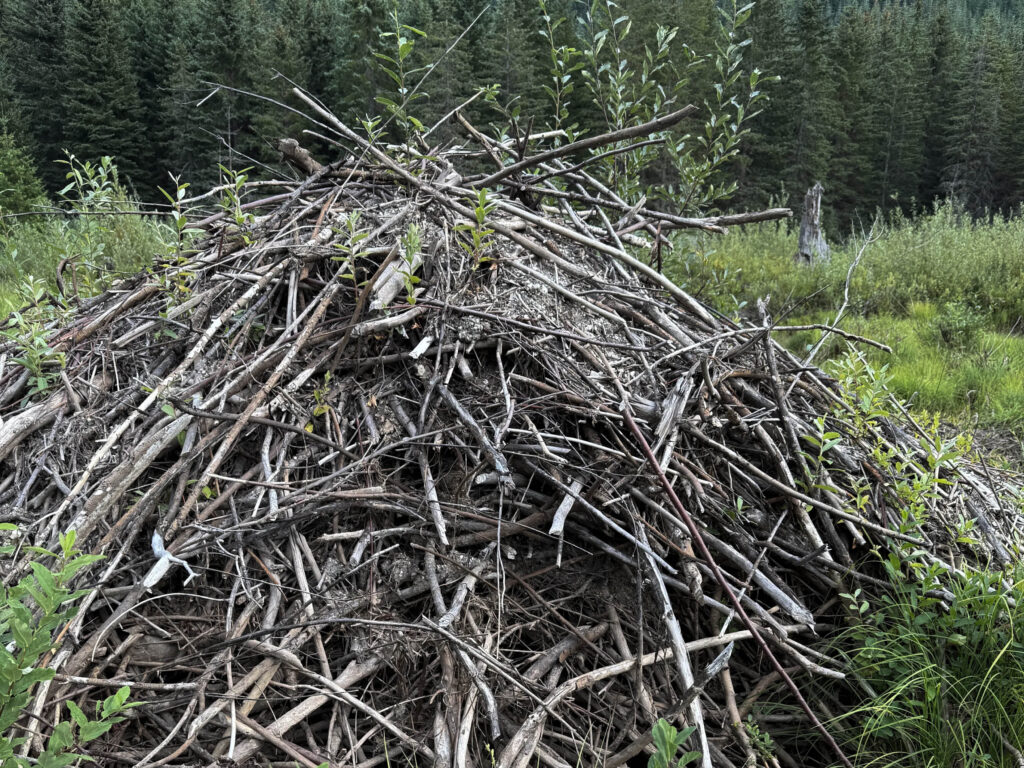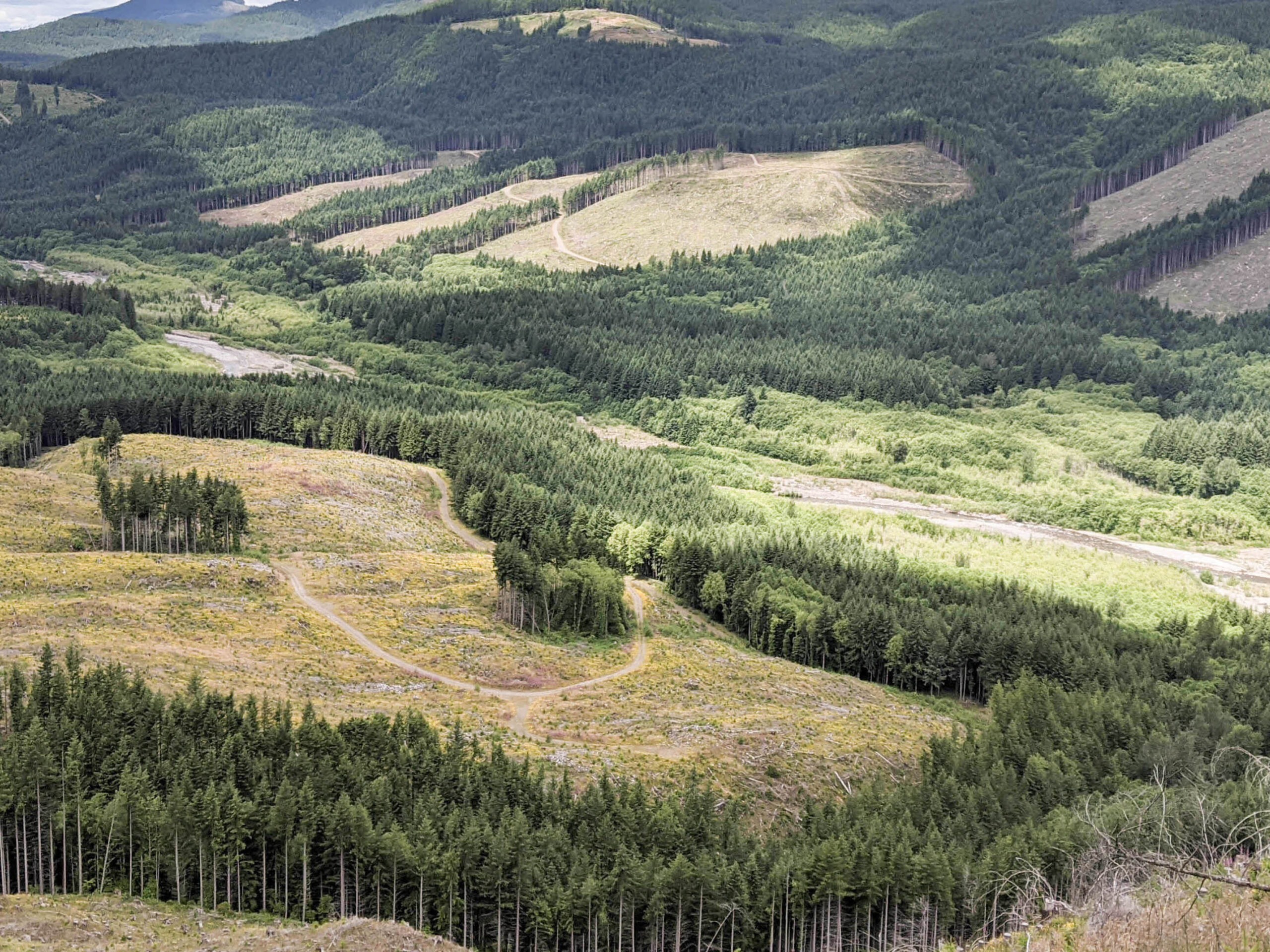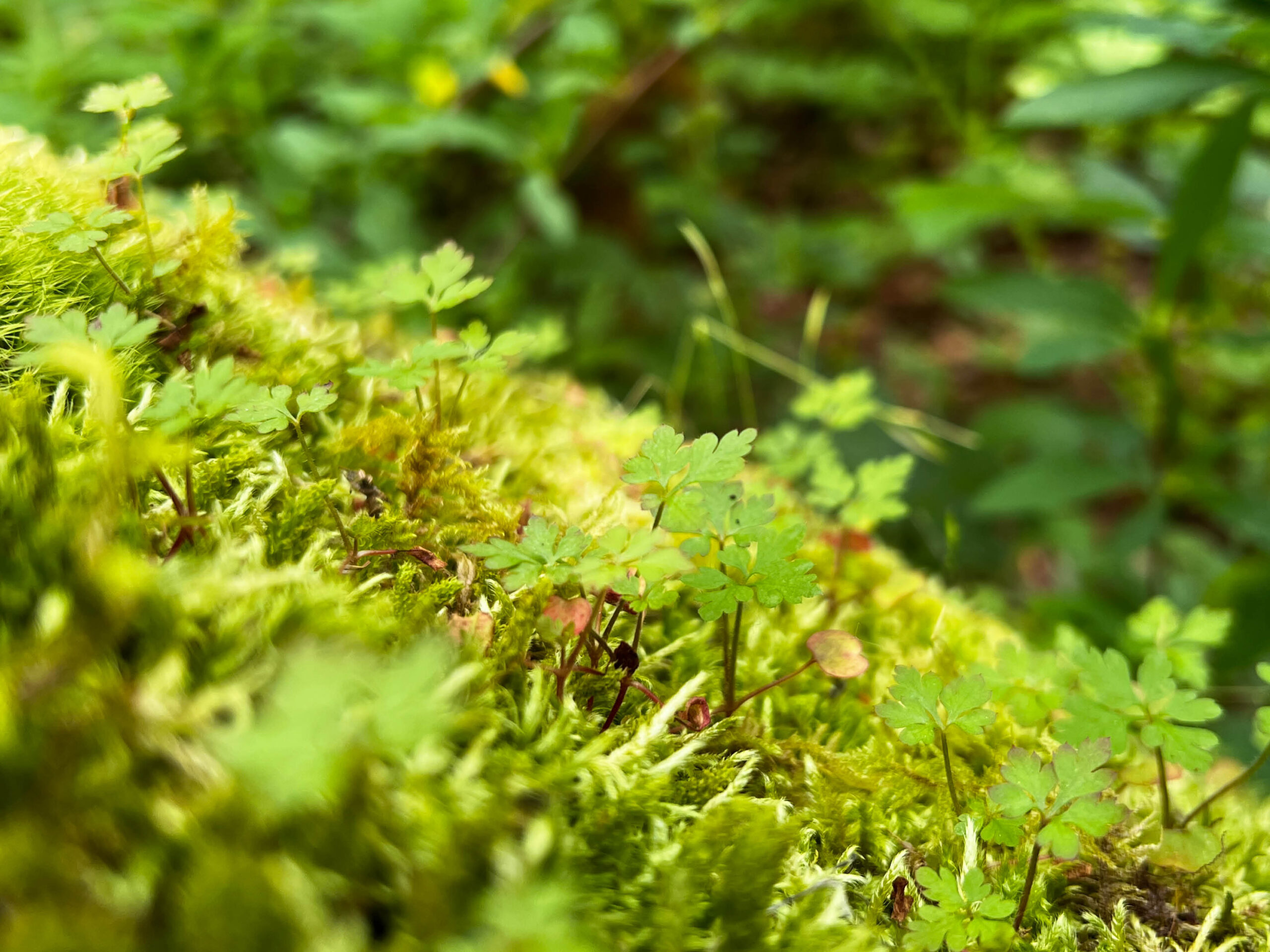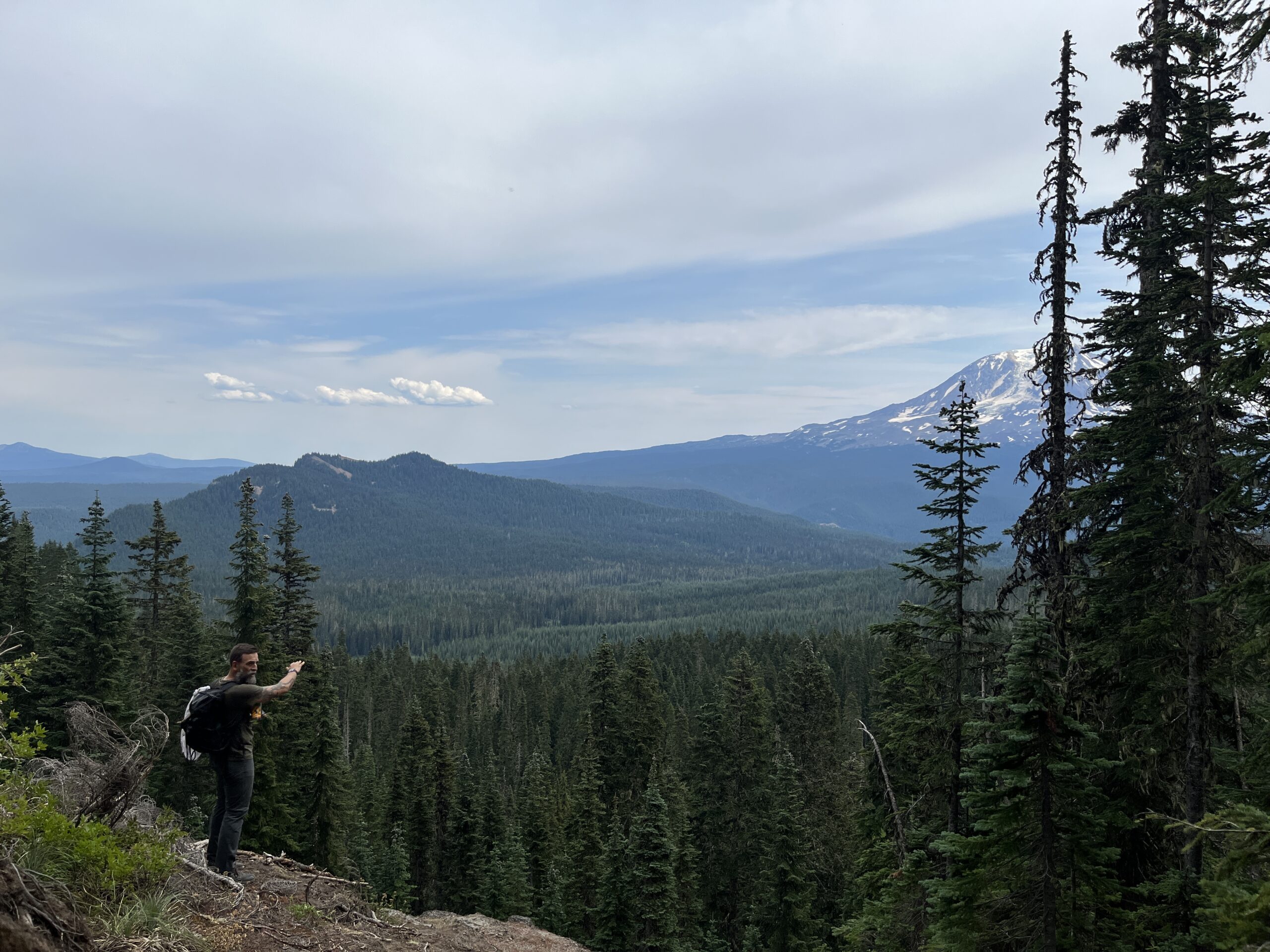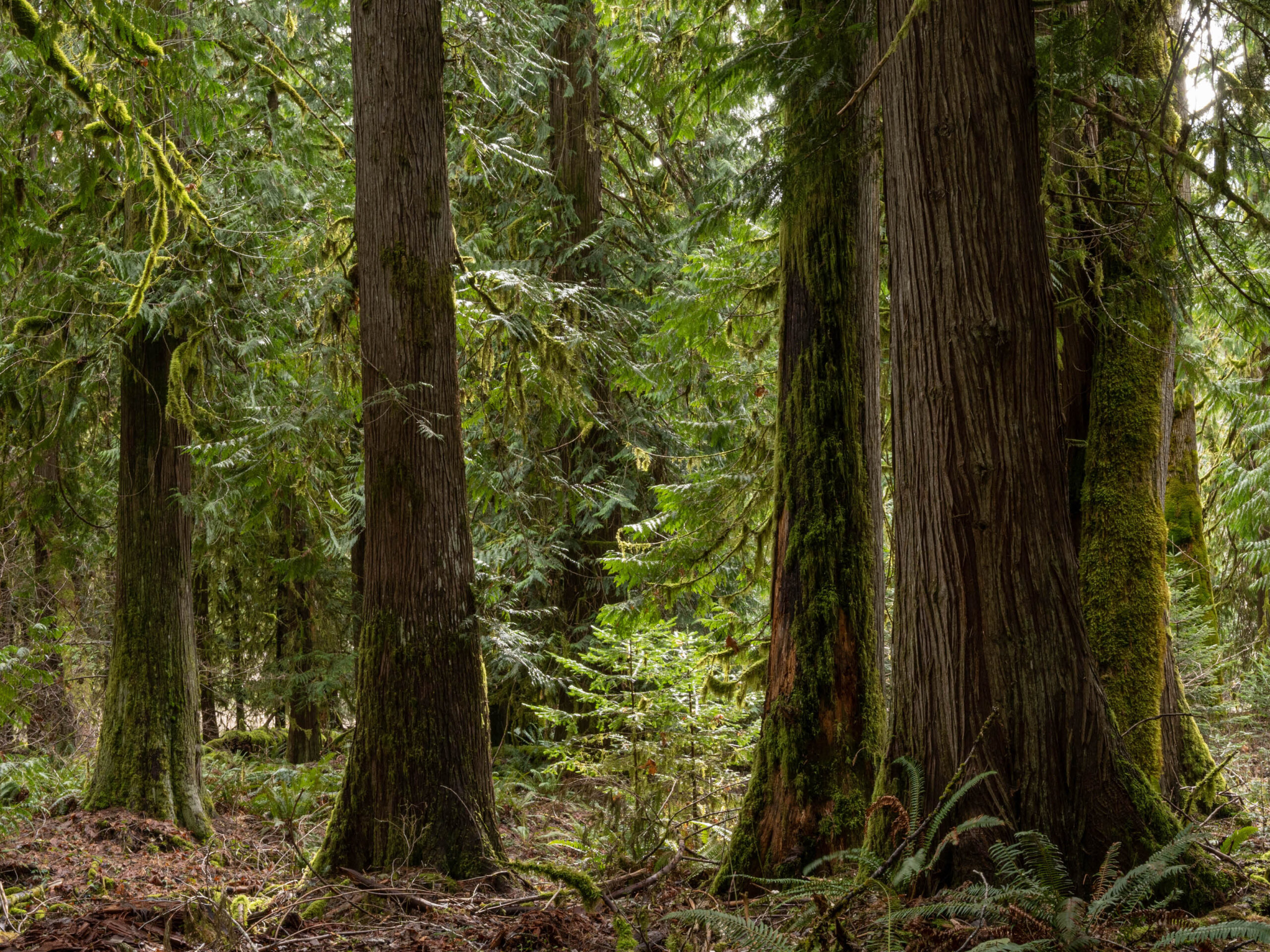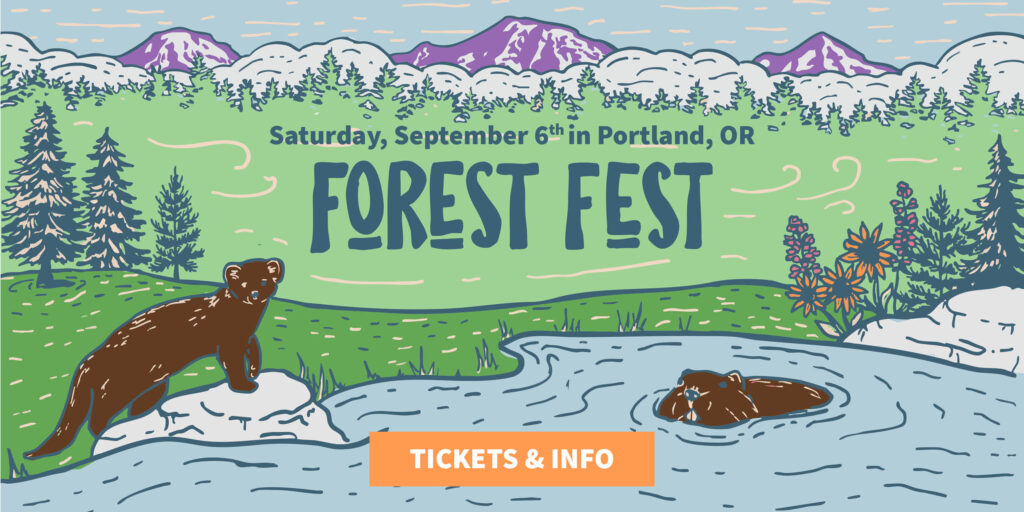In 2017, Cascade Forest Conservancy began our beaver relocation journey with a big-picture approach. The first step was to conduct a spatial analysis across dozens of watersheds in southwest Washington to identify areas with environmental features that create suitable beaver habitat. The spatial analysis highlighted many streams, wetlands, and lakes that could support beavers, but there were many features that we would need to observe on the ground to ensure that was true. Were beavers already living there, or could these places be good candidates for relocation?
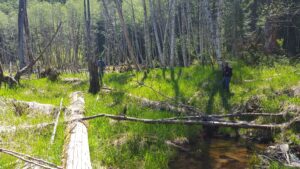
Our early surveys in 2017 and 2018 identified numerous active beaver sites, as well as approximately twelve sites that had once hosted beavers but were now empty, and these sites still had the features to support new colonies. Many were located in the headwaters of a watershed, in places hard for beavers to reach naturally. Since their near extripation in the late 1800s, beaver numbers have struggled to return anywhere close to what they once were. Trapping, in combination with other anthropogenic effects such as stream clearing, logging, and road creation, has led to beaver populations being more disconnected than ever. As a result, many ecosystems are still lacking these keystone species.
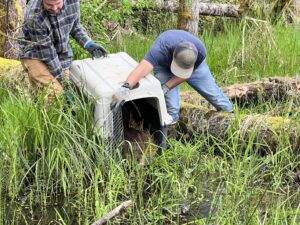
At first, our goal was to relocate beavers back into upper watersheds in the hopes that they would like the location we picked out for them, build a home, reproduce, and eventually spread downstream to reconnect with other populations. Over time, though, the focus of beaver management has shifted. These days, there’s more emphasis on helping beavers stay where they already are and working with landowners to minimize conflicts. But relocation still matters and is needed because there are still situations where beavers can’t stay put, and without relocation as an option, they would be lethally removed. Many of the sites where CFC has relocated beavers between 2020 and 2025 are still occupied today, which means we need more release sites, so it’s back to the National Forest to find more spots.
HOW WE’RE FINDING GOOD HOMES FOR BEAVERS
This summer and fall, we’ve been trekking through the north zone of the Gifford Pinchot National Forest (north of the Lewis River), surveying potential habitat. These locations were identified as “high potential” by a spatial model created by researcher Ben Dittbrenner, whose work informed our first analysis back in 2017. Since then, he and his team have refined the “beaver intrinsic potential” model and applied it across many states nationwide.
So what makes good beaver habitat anyway? And how do we decide if a site is relocation-ready? Luckily, we’ve got a scorecard that looks at what beavers need and what they prefer!
The number one requirement is obvious – water. But not just any water will do. Beavers need slow-moving streams, ponds, or lakes that have areas that are at least three feet deep so they can easily escape predators.
They also need building supplies for the dams and lodges they make. Not all beavers build dams, and not all beavers build lodges, but we want to make sure enough material is available in case they ever want to construct. Beavers use both hardwoods and conifers for dam and lodge material, from small stems to large trees. When it comes to food, they are more particular. Willow, cottonwood, maple, and red alder are at the top of their menu in southwest Washington. They eat other herbaceous plants, but the cambium layer and leaves from these tree species are what they enjoy most. Sites with seemingly endless willow stems are basically a beaver buffet, but since deer and elk like the same plants, we also look at grazing pressure to make sure there’s enough food to go around.
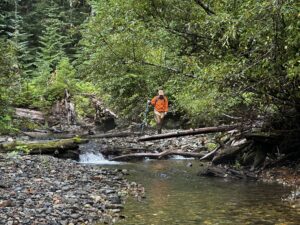
Another feature we look for is muddy streambanks. As mentioned before, not every beaver builds a lodge. Some prefer to make a den by burrowing into a stream bank, typically under a tree with a strong root system that helps keep the walls of their den nice and sturdy. They have relatively small front paws but have really long claws, so they can easily dig into finer sediments to burrow.
If we find all of the features the beavers are looking for, we need to ensure that there are no beavers currently living in the area for it to become a suitable relocation site. That means searching for signs like chewed sticks, food caches, lodges, dams, slides, or burrow entrances. The thing that solidifies current inhabitance is seeing scat. It breaks down quickly in water, so any scat that is present means beavers are very likely present. Chewed branches with green leaves still attached, freshly packed mud on a dam, or newly placed sticks on a lodge are other clear indicators. Dried-out woody materials tell a different story: beavers were here once, but not recently. Finding old evidence but no new evidence is a good sign. It means that the habitat has the ability to support beavers as long as all of the features mentioned above still exist. At the end of the survey, we calculate the score and determine if it ranks as suitable.
During these surveys, if we find new beaver evidence, we document it as well, so we can gain a better understanding of where beavers are currently living in SW Washington. Here is a selection of photos from our recent surveys.
